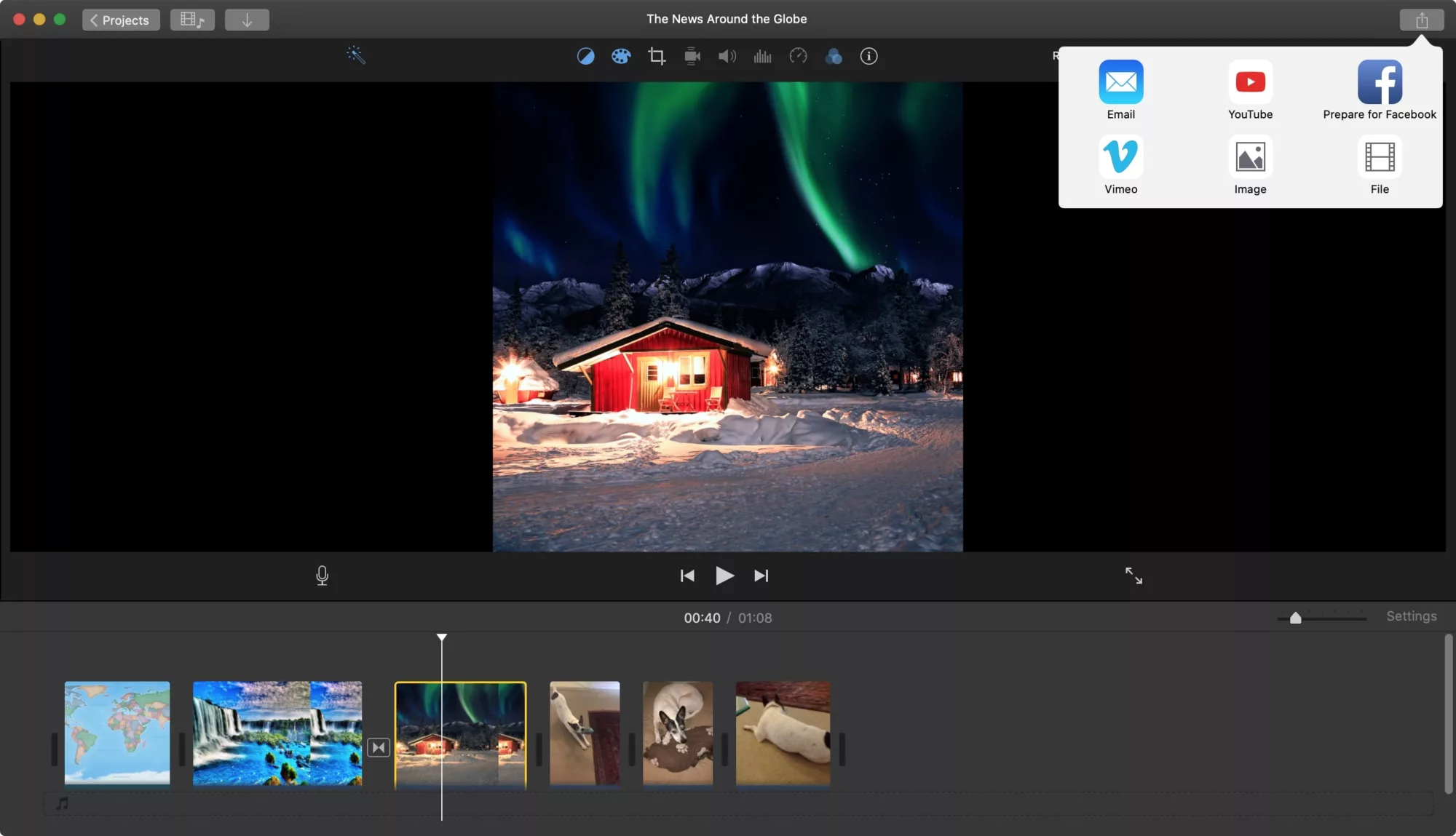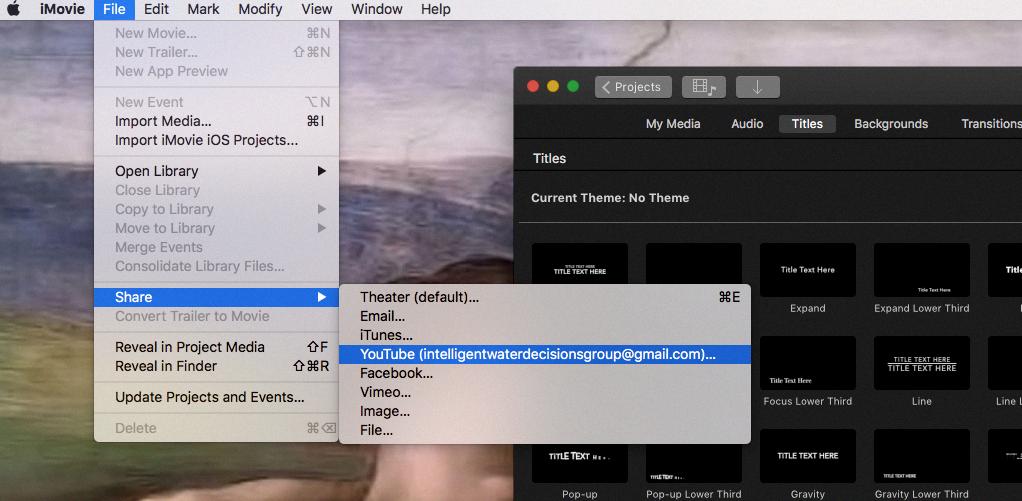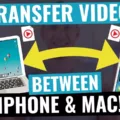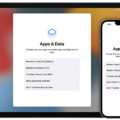Exporting iMovie projects from an iPhone to a Mac can be a great way to access and share your movie projects. With the right steps, you can quickly transfer your project files and get them ready for editing on your Mac.
To start, you’ll need to connect your iPhone to your Mac using the USB cable that came with the device. Then open the iMovie app on your Mac and select the Import window in the toolbar. This will allw you to access all of the video clips and photos captured on your iPhone.
Once you have imported all of your content, it’s time to export your project from your iPhone. In the Projects browser, select the iMovie project you want to send, click the More button, then choose Share Project. If you’re editing a project, click the Share button instead. You’ll then have a few options for how you want to send your movie including email or AirDrop which allows for direct transfer of files between devices.
To share via email simply complete the email form that is created and click Send. For AirDrop transfers, tap Options in the Share menu and make sure that “Send as Video” is selected so that others can view it without needing iMovie installed on thir device. Then tap AirDrop and select which device you want to transfer it too before tapping Done and watching it fly through the air!
Exporting iMovie projects from an iPhone to a Mac is a great way to ensure that all of your hard work doesn’t go unnoticed or lost in digital space. By following these simple steps, you can easily transfer all of your projects over so they can be edited further or shared with others at any time!
Transferring an iMovie Project from iPhone to Mac
Yes, you can transfer an iMovie project from your iPhone to your Mac. To do so, open the iMovie app on your Mac and select File > Import > Movies from the menu bar. Then, connect your iPhone to your Mac using the USB cable that came with the device and turn on the device. Once connected, select your iPhone from the list of devices in the Import window and click Import Selected. The video clips and photos associated with the iMovie project will be transferred to your Mac whee you can continue working on it in iMovie.

How Do I Transfer IMovie From IPhone To Computer?
Transferring iMovie projects from your iPhone to a computer is easy and straightforward. First, make sure that both your iPhone and the computer are connected to the same Wi-Fi network. Then, open the iMovie app on your iPhone and select the project you want to transfer. Tap the Share icon in the top right corner, then tap “Copy to Desktop”. Select “This Mac” from the list of available devices and the project will begin transferring over. Once it has completed, you can find it in your Movies folder on the computer. That’s all tere is to it!
Transferring iMovie Projects Between iOS Devices
To transfer iMovie projects between iOS devices, you’ll need to use AirDrop. First, open the iMovie app on your iPhone and select the project you want to share. Tap the Share button, tap Options, then tap Done. Next, tap AirDrop and select the device you want to send it to. Make sure AirDrop is enabled on both devices and that they are close enough for the transfer to take place. The project should apper in the iMovie app on the receiving device shortly after.
Exporting Projects From iMovie
There could be several reasons why you are not able to export your project from iMovie. Firstly, check if there is sufficient storage space on your device to export the project. If the storage space is limited, you may need to free up some space before attempting to export your project. Secondly, it is possible that the video file you are trying to export is corrupted or damaged in some way and neds to be replaced. Thirdly, make sure that you have used a valid filename for exporting the project as invalid characters can prevent successful exporting of an iMovie project. Finally, there may be an unknown bug or issue with the iMovie software itself which could be preventing successful exporting of projects. If all else fails, you may need to try reinstalling iMovie or contact Apple Support for further assistance.
Does IMovie Save Across All Devices?
No, iMovie does not save on all devices. It is only able to save projects and video files to the device you are using, or to other devices thrugh the “Save to Files” feature. You can use this feature to save projects and videos so they can be opened and edited on other iPhones or iPads as long as they also have iMovie installed. However, it is not possible to open iMovie projects on other devices without the app.
The Difficulty of Exporting from iMovie
Exporting from iMovie can be tricky becase of the different formats supported and the time it takes for the export. Depending on the size of your project and the complexity of its elements, exporting your movie can take a while, especially if you are using a slow computer or Internet connection. Additionally, iMovie supports many different file formats, so you need to make sure that you are choosing the right format for your project. If you select an incompatible format, the export may fail or render an unusable file.
Transferring an iMovie Project to a Computer
Transferring an iMovie project to your computer is a simple process that can be completed in a few steps.
First, open the iMovie application on your computer and select the project you wuld like to transfer. Then, click on File > Export Movie, which will open a window with multiple format options. Select one of the format options that best suits your needs and click “Next”. You will then be prompted to choose a folder or location on your computer where you would like to save the project. After selecting a folder or location, click “Export” and the project will begin transferring. Once the transfer is complete, you can find your iMovie project in the folder or location you selected.
Exporting iMovie to a Computer
To export an iMovie project to your computer, begin by opening the file in iMovie and highlighting the final sequence you would like to export. Then, go to File > Share > File and select the options that best fit your desired output type. Once you have made your selections, click ‘Next’ and then click ‘Save’ to begin the export process. Once the process is complete, a notification will appear indicatig that your share was successful.

Source: leticiamooney.com
Does IMovie Transfer Through ICloud?
No, iMovie does not automatically transfer through iCloud. To watch your iMovie Theater content on all your devices, including Apple TV, you will need to move your videos to iCloud Photos. You can do this by opening your Photos app on your Apple device and selecting the videos you want to upload from the iMovie Theater tab. Once you have selected the videos, tap the “Share” icon in the bottom left corner of your screen and select iCloud Photos as the sharing option. You will then need to turn on iCloud Photos befoe you can continue with transferring your content. Once it is turned on and the videos are uploaded, they should be available for viewing on all of your devices that have iCloud Photos enabled.
Conclusion
In conclusion, exporting an iMovie project from an iPhone to a Mac is a simple and straightforward process. By connecting your device to your Mac using the USB cable that came with the device, you can open the Import window and easily transfer your video clips and photos. Alternatively, you can send your movie via email or use AirDrop to send your films and trailers directly to another iPhone or iPad or to a Mac. You can also share a movie or trailer as a video file or as a project file that you can continue editing on the othr device. With these options available, transferring iMovie projects from iPhone to Mac is made easy and convenient.








